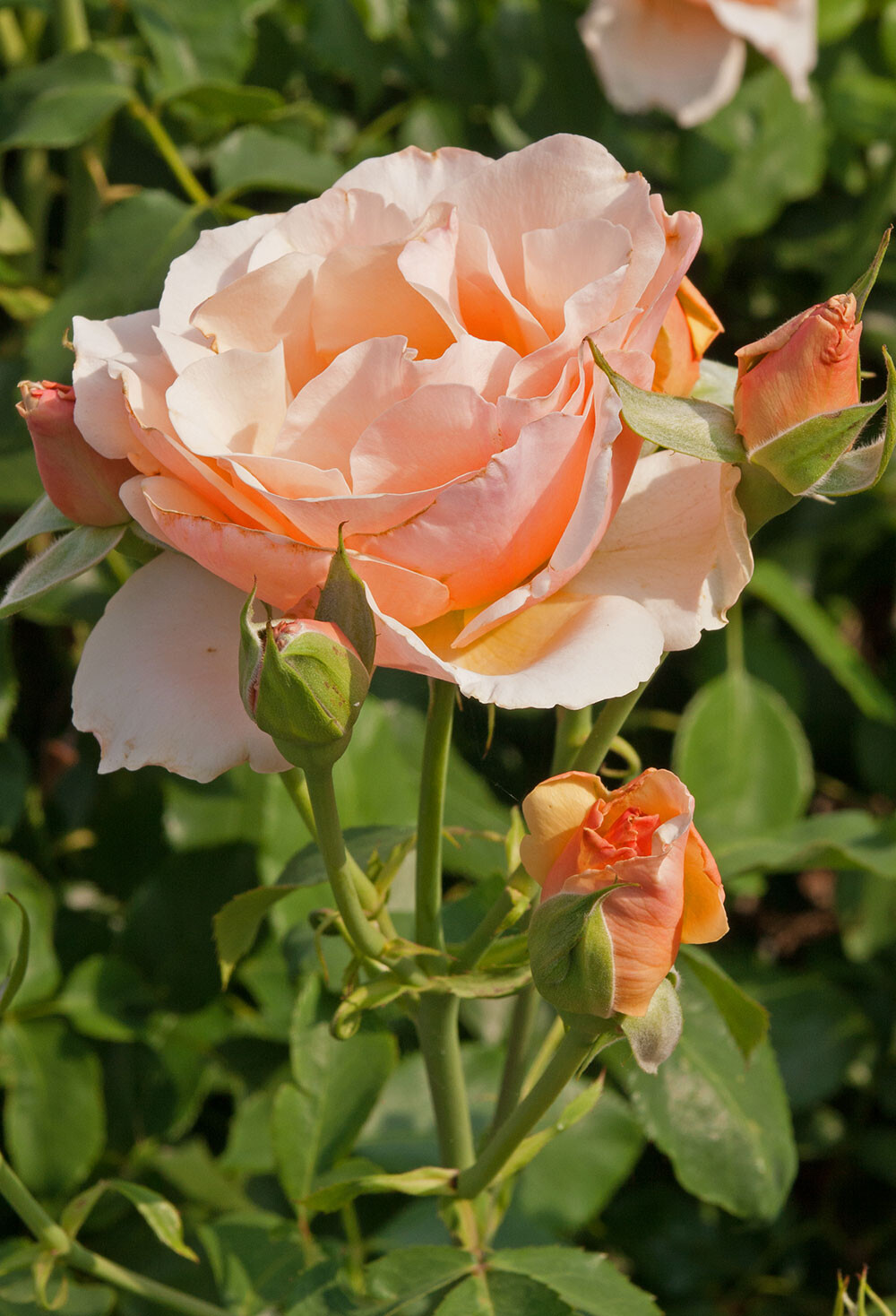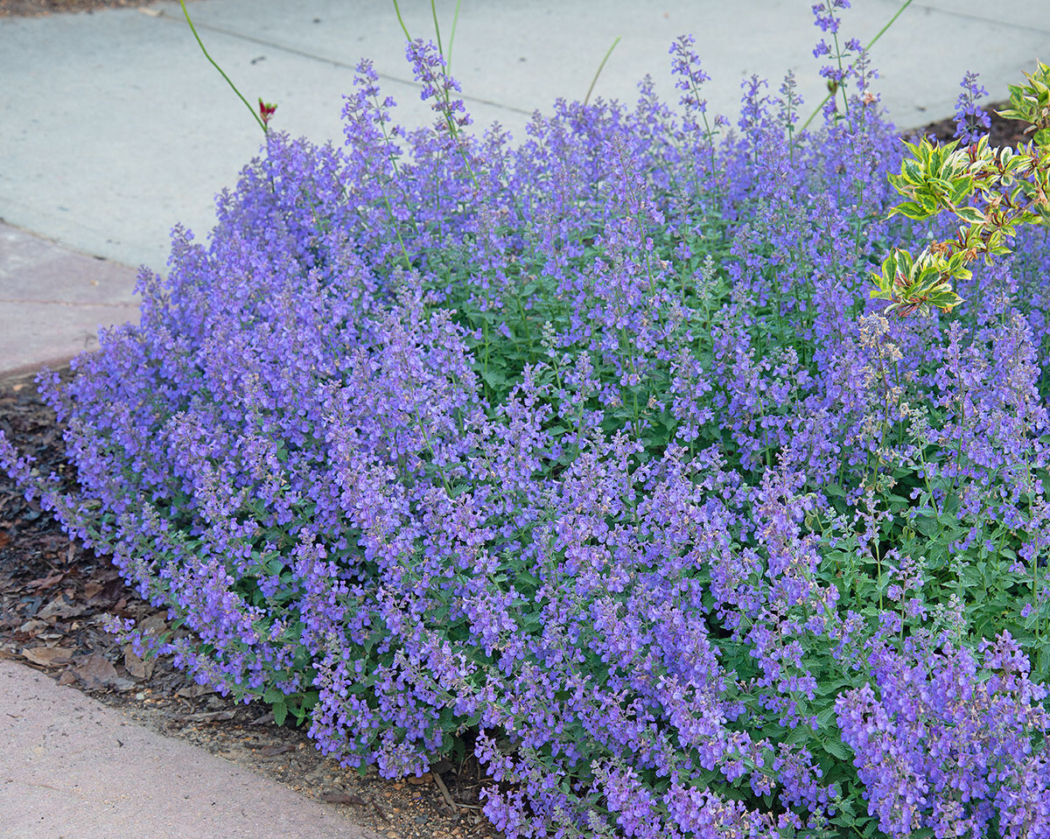Catnip (Nepeta cataria) is a plant well known to kitty owners who like to see their feline friends get goofy. But a close cousin, catmint (Nepeta faassenii), packs a visual pop that can have gardeners purring with delight.
Unlike catnip, which shows modest flower displays and tends to be weedy, catmint generally behaves — typical selections are sterile hybrids — and has the potential to be a reliable go-to plant for landscape eye candy.
Catmint, an herbaceous perennial herb, can light up the garden with a pleasing bang, covering itself with masses of petite, lavender-bluish tubular blossoms. However, bloom production will sputter without well-timed prunings. So when the pretty parade starts to fade, deadhead to encourage another round of blossoms. Selectively — aka, laboriously — snip wilted flowers, if you want, but I just buzz-cut my clump with a hedge trimmer, and then I’m quickly off to another garden chore.
Winter hardy in area gardens, catmint is also deer resistant, and, once established, can survive drought conditions, creating possibilities for its use in xeriscaping projects, rock gardens, or container plantings. It could suffer in heavy clay or areas that don’t drain well, so generously amending such inhospitable growing grounds with compost or commercial soil conditioners is a good idea.
While catmint prefers full sun, a site that is brushed with light shade during the high heat of the day will help keep its flower displays looking fresher through the summer. Also, note that too much nitrogen can cause its limbs to stretch and flop.
For years, the cultivar ‘Six Hills Giant’ has been the catmint’s meow for gardeners, but, as its name implies, it can be a biggie — growing up to 3 feet tall and about as wide — so give it room. ‘Walker’s Low,’ the Perennial Plant Association’s 2007 Perennial Plant of the Year, has a similar sizeable stature. Looking for less? A favorite of mine, ‘Junior Walker,’ tops out at only around 2 feet tall.
Unlike catnip, catmint, while fragrant, does not usually provide an intense buzz for kitties — and my cats’ upturned noses say it ain’t so, too. However, for your own acoustical as well as visual buzz, know that catmint flowers are irresistible to hummingbirds and bees. Ditto for butterflies.
Catmint shouldn’t be hard to find locally, especially at garden centers with decent herb plant sections. And the obvious Plan B would be perusing online for this purr-fect perennial.
To Do in the Garden

‘Mother of Pearl’ is one of many black spot–resistant rose cultivars.
Shying away from growing roses because of the dastardly cootie known as black spot? Well, to fight this fungus, simply pick rose cultivars that are resistant to black spot — and there are a ton of them out there.
Also, while you can mess with messy preventative fungicides, maybe first try growing roses in anti–black spot conditions, such as planting in open, sunny sites for better air circulation to quickly dry foliage, and, since black spot is a soil-borne bugaboo, adding mulch to deflect water splashes from the ground.
Also, irrigate under your roses, not over them. Obviously, if you see any leaves with, um, black spots, pick them off to prevent spread. Finally, regularly rake spent leaves and flower petals from around your pretties.
June
- Father’s Day is on the 15th, so, if Pop is an avid gardener, why not surprise him by planting a special, hard-to-find, or specimen perennial, shrub, or tree in his honor?
- If you want to spot spray weeds and not worry about a deadly drift to favored plants, cut the bottom out of an empty 2- or 3-liter plastic soda bottle, place the slit end over offending weeds, spritz liquid herbicide into the narrow top opening, let the spray settle, and then move on to other unwanted plants.
July
- Pumpkins typically take from three to four months to mature from seed, so if you start a patch at the beginning of this month — and keep the plants healthy — they should be ready just in time for October’s spook-fest.
- Sure, the summer scorch is in place, but it is not too soon to start a fall veggie patch. The middle of this month is a good time to begin planting collard greens, carrots, beets, rutabagas, Brussels sprouts, and cabbage.
- Movers & Shakers Class of 2025
- Welcome to Grilling Season
- Find Something New-to-You at The Meat House
- Garden Adventurer: Catmint: A Purr-fect Perennial
- Liquid Assets: Pillow Made of Concrete
- Liquid Assets: Spicy Pineapple Margarita
- Restaurant Profile: Brewery Bhavana
- Pay It Forward: Carolina Circus Festival
- Small Business Spotlight: OHM Fitness – Cary
- Erica Chats: Moments and Memories
- Things to Do: June/July 2025







